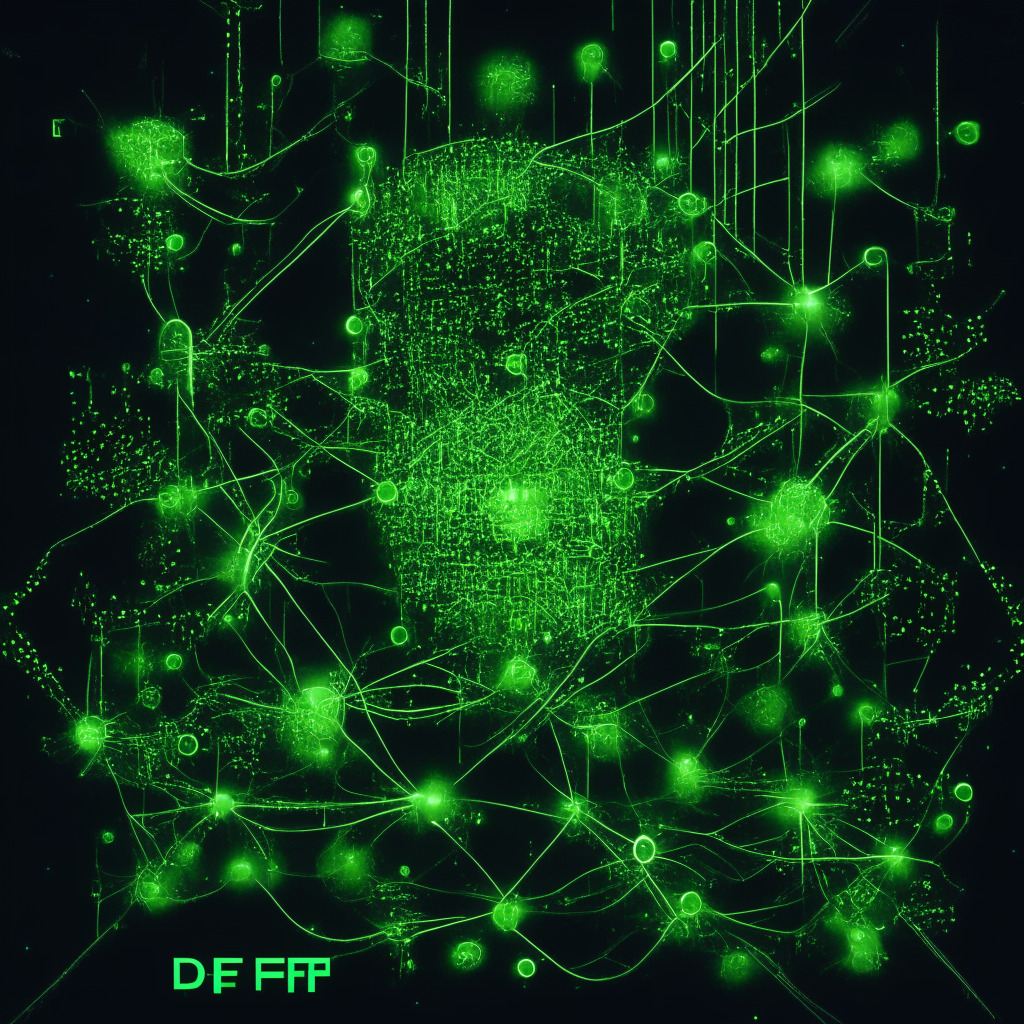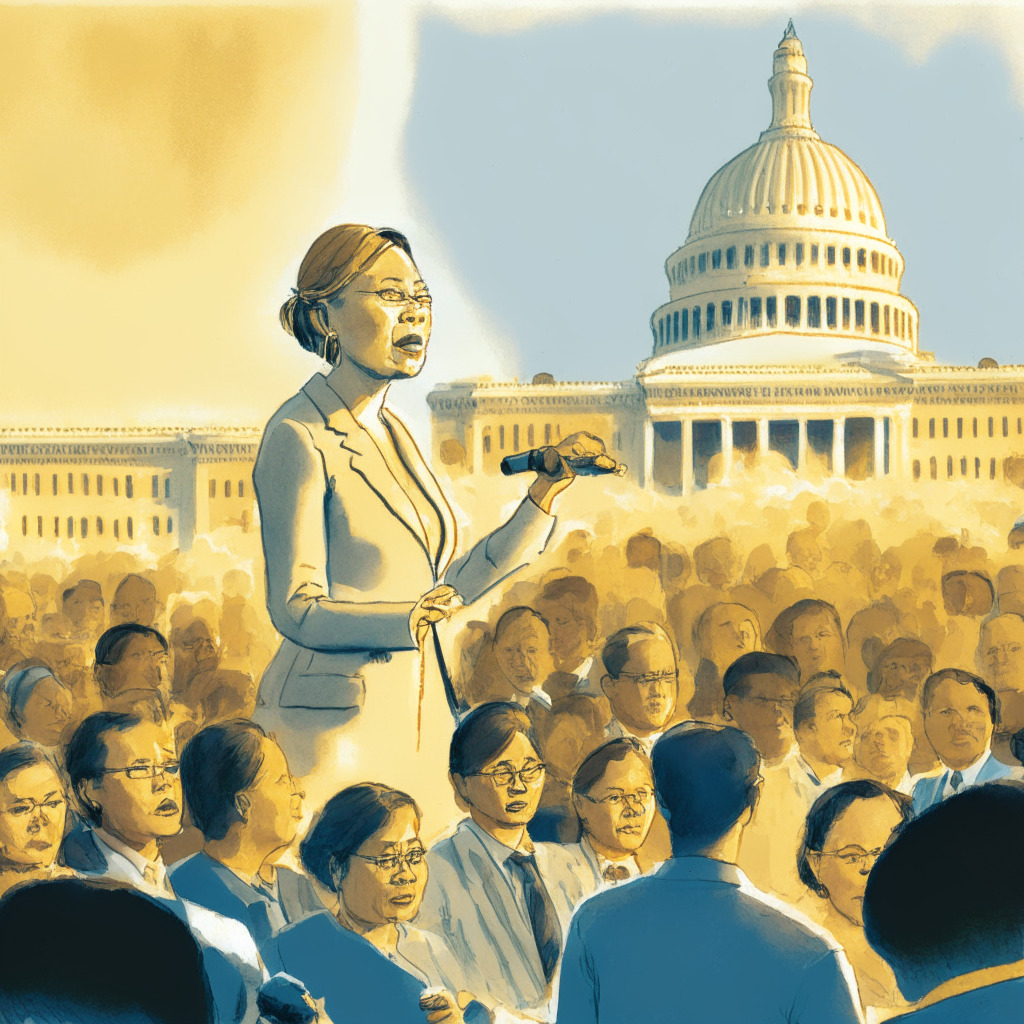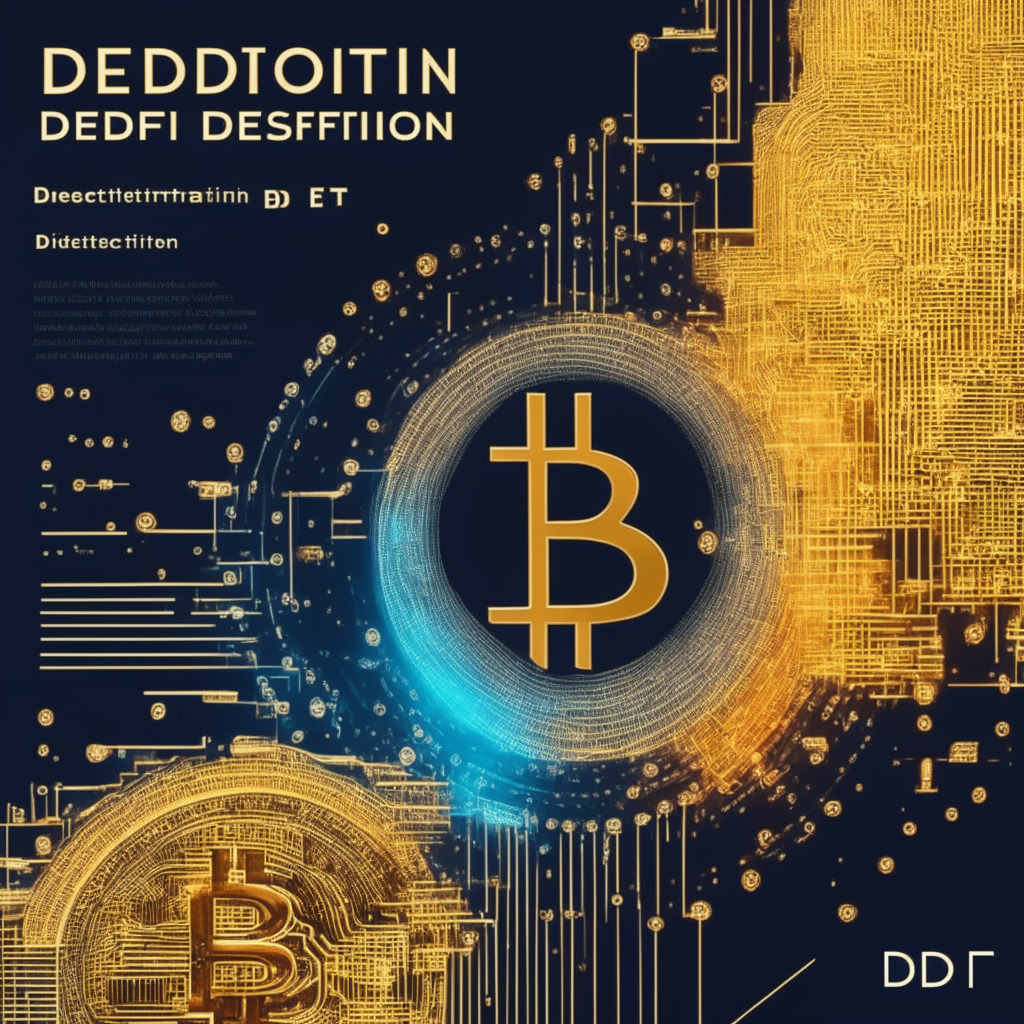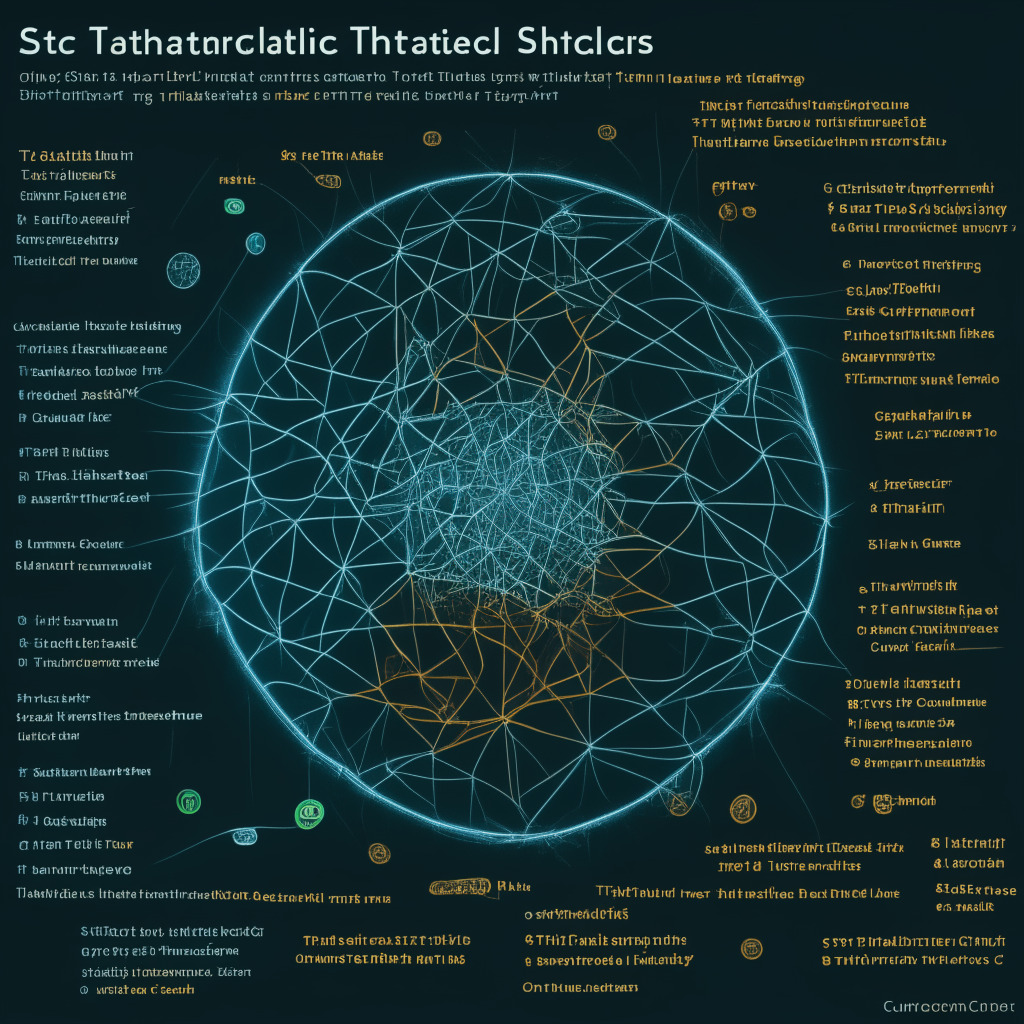“The recent $62 million hack of Curve Finance highlights a pressing need for improved security in the cryptocurrency landscape. The considerable financial damage reveals potential vulnerabilities in DeFi platforms. Despite nearly 79% of funds successfully recovered, this unfortunate incident brings attention to the preparedness of DeFi sector against sophisticated threats.”
Search Results for: MIT
Balancing Anonymity and Regulatory Compliance: The Crypto Conundrum
“Despite Bitcoin’s cornerstone anonymity principle, the crypto industry is grappling with regulatory scrutiny. Regulatory compliance, particularly tackling KYC and AML issues, is now crucial. Specialized, automated platforms offered by identity verification service providers, leveraging AI technology, may aid this process while maintaining user-experience quality and industry’s legitimacy.”
Mantle’s $4.2 Billion Treasury: Why the New Economics Committee Can be Both a Blessing and a Curse
“Mantle community is establishing an economics committee to manage its $4.2 billion treasury, largely consisting of its governance token MNT and stablecoins USDC and USDT. The formation expresses a desire for accountability and democracy in decision making, but raises questions about the solidity of Mantle’s financial base due to crypto volatility.”
Anatomy of a Cyberattack: Unveiling the Multi-Stage Process and Mitigating Future Threats
“Cyberattacks pose major threats in today’s digital world, exploiting vulnerabilities in systems for harmful purposes. These attacks start with reconnaissance, weaponize found vulnerabilities, deliver and install harmful software, then take measures to conceal activity. To mitigate risk, educate on threats and implement robust digital safety measures.”
Sandbox’s Adoption of KYC Measures: Boosting Security or Compromising Anonymity?
Sandbox, a renowned metaverse platform, has initiated Know Your Customer (KYC) measures in line with protocol staking. Staking users must complete a verification process, a move intended to improve security and compliance. Animoca Brands expressed optimism about Hong Kong’s changing blockchain attitudes amidst ongoing SEC allegations.
Decoding Crypto Values: The Influence and Limitations of Metcalfe’s Law
Metcalfe’s Law is significant in the crypto realm, it suggests a direct correlation between a network’s participants and its value. This law can explain Bitcoin’s price formation, with increased users leading to a surge in its value. However, it doesn’t encapsulate all elements of this intricate landscape.
MIT’s PARSEC: Enhancing CBDCs or Inviting Government Control?
MIT’s Digital Currency Initiative has revealed an experimental central bank digital currency platform, PARSEC. With its programmability feature, it promises to revolutionize asset backing and decentralization, but concerns about privacy and governmental control remain significant obstacles. Supported by the ERC-20 standard, PARSEC surpasses public blockchains performance, though requires continual enhancements in security and data management.
Navigating the Era of DeFi Micro-Primitives: Innovation or Complexity Overload?
“DeFi micro-primitives, a growing trend, represents more nuanced, decentralized & trustless DeFi protocols that are concurrently becoming complex. With inherent advantages and challenges, these micro-primitives hold potential to sculpt a DeFi landscape that’s refined, adaptable, programmer-friendly, and multifaceted.”
US Banking Advocacy Group Backs Crypto Legislation: A Balance Between Regulation and Anonymity
Senator Elizabeth Warren’s reintroduced crypto legislation aims to bring transparency to digital asset transactions to mitigate risks of money laundering and terrorism financing. It requires digital asset wallets, blockchain transaction validators, and miners to preserve customers’ identity records, which may impact the crypto community’s cherished values of security, anonymity, and independence.
Unmasking Crypto Anonymity: The Controversy and Consequences of Arkham Intel Exchange
Arkham Intel Exchange, a new platform offering monetary rewards for identifying anonymous crypto users, is sparking debate within the digital currency industry. Despite privacy concerns, many are utilizing the service to expose those behind major crypto exploits. Arkham exemplifies the intricate balance between crypto’s privacy struggle and the desire for transparency.
Threads vs Twitter: Decentralization, Anonymity, and the True Value of Social Media Platforms
“Threads by Meta, initially seen as a rival to Twitter, has seen a 70% drop in user activity. Despite promising decentralization possibilities, its requirement for Instagram credentials and linked Meta account raise data security and anonymity concerns, especially among crypto enthusiasts.”
Ethereum Faces Unsettling Death Cross: Exploring Potential Outcomes and Mitigation Factors
The Ethereum network may be overpriced, as suggested by the high NVT reading of 120. Despite the potential for a price drop, current holders’ profit levels and the decrease in Ethereum’s liquid supply might mitigate this fall. The ETH supply drop since the Shapella upgrade and a steady increase in staked ETH for validation provides a likely firm bottom. Nonetheless, traders need to be watchful of potential risks amid looming bearish scenarios.
Unmasking Worldcoin: A Paradox of Blockchain Anonymity and Biometric Data
Worldcoin, led by OpenAI chief Sam Altman, utilizes AI and biometrics for an exclusive global identity system, enhancing online security and economic opportunities. The project faces criticisms around privacy, particularly for using retina data for digital identity. It aims to address online identity issues while stimulating global economic expansion, making distinctions between humans and AI.
Twitter’s DM Limitations for Unverified Accounts: A Blow to Free Speech or a War on Spam?
“Twitter’s upcoming implementation of daily DM limits for unverified accounts aims to decrease spam. Critics worry it may increase ‘Twitter Blue’ subscriptions and enhance verification requests, while potentially enabling spamming by verified accounts. These developments appear to lean towards revenue generation rather than combating spam.”
Deciphering the Future: Bitcoin’s Intersection with DeFi and the State of Crypto Summit
“Bitcoin’s inroad into DeFi isn’t solely about redefining financial paradigms but also indicative of the digital gold’s unquestionable versatility. The revolutionary effect of Bitcoin’s intersection with DeFi is nothing short of turning the financial world on its head.”
Manta Network’s Record-breaking Valuation: Revolutionizing DeFi Through Privacy and Anonymity
“Manta Network, backed by P0x, has reached a valuation of $500M after a recent funding round. This funding aims to boost scalability and user base, and increase overall utility. P0x revealed plans to launch Manta Pacific, featuring decentralized applications (dApps) enabled by zero-knowledge (ZK) technology, enhancing privacy and security in the DeFi community.”
Unraveling the Digital Yuan: Promise, Limitations, and China’s Financial Future
China has processed approximately $250 billion in transactions using their central bank digital currency (CBDC), the e-CNY, predominantly used in domestic retail payments. Despite this growth, this only accounts for 0.16% of China’s total monetary supply, highlighting the untapped potential of this digital currency.
Scaling the Borders of Financial Freedom: Shinhan Bank Tests Stablecoin Remittances on Hedera Network
Shinhan Bank, a South Korean banking titan, completed a successful test for stablecoin remittances on Hedera’s network, allowing real-time, instantaneous settlement and foreign exchange rate integration across three currencies. This process decreases complexities and cost for cross-currency transactions, offering a solution to high intermediary bank charges in current financial structures, especially with cross-border transfers.
Crypto Calamity and Renaissance: Unraveling The Celsius Network Fiasco and Lugano’s Crypto Embrace
“The incident with Celsius Network exemplifies the need for a balanced approach to crypto regulations — ensuring investor security without stifling innovation. Despite Celsius’s unfortunate downfall, locales like Lugano, Switzerland, illustrate the positive potential of cryptocurrencies with balanced regulation and forward-thinking adaptation.”
Navigating Tax Laws for Cryptocurrencies: US Senate Committee’s Call to Action
The U.S. Senate Committee on Finance is working to resolve regulatory complexities in the digital asset industry, incorporating the crypto community’s help. This initiative aims to create comprehensive tax laws around cryptocurrency activities, enhancing compliance within the expanding U.S. crypto sector. However, these rules may impact the decentralized essence that embodies cryptocurrency’s ideology.
Twitter’s Rate Limitations: The Impact on Crypto Communities and the Emergence of Decentralized Alternatives
“Twitter’s decision to place severe rate limits has led to a significant limit on shared information. Reports indicate a drop of over 60% in the number of tweets indexed by Google. This change has consequences for industries, especially cryptocurrency, as Twitter is used heavily for information dispersion. Decentralized Twitter rival, Mastodon, is seeing unprecedented growth, while Twitter competitor, Threads, prepares for launch.”
Potential Crypto Calamity: Unmasking Huobi’s Near-Miss Data Breach and Its Implications
Huobi, a major crypto exchange, recently danced dangerously close to a potential disaster due to a massive vulnerability that exposed user assets for nearly two years. The breach was discovered by researcher Aaron Phillips and could have resulted in the largest crypto theft in history if exploited.
Resubmitting Bitcoin ETF Applications: SEC Standards vs Crypto Market Ambitions
Last week, high-profile finance establishments were found lacking in their spot Bitcoin ETF filings, triggering a swift response from several firms to revamp and re-file their applications. Despite initial inconsistencies, these efforts reflect a drive towards a more compliant crypto market, bolstering Bitcoin’s resilience in the midst of market challenges.
DALL-E Unleashed: Revolutionary AI Image Synthesis and its Limitations
OpenAI’s DALL-E is a revolutionary generative AI model capable of producing unique visuals from textual descriptions, combining language and image processing concepts. Applications include creative design, marketing, and virtual worlds. However, limitations like biases and lack of contextual awareness require ongoing research to enhance the technology.
Collapse of Crypto-Friendly Banks: Time to Rethink Deposit Insurance Limits?
Circle and Sequoia Capital were among top depositors in collapsed Silicon Valley Bank (SVB), raising concerns about depositor fund security and current regulations in the crypto space. The situation highlights the potential need for increased deposit insurance limits as more financial institutions embrace cryptocurrencies and blockchain technology.
Ava Labs Integrates AvaGPT to Enhance User Support: Innovation Meets AI Limitations
Ava Labs introduces AvaGPT, employing OpenAI’s ChatGPT technology to provide quick assistance to Avalanche users while ensuring complex queries are handled by their customer support. Through a partnership with Kapa AI, AvaGPT becomes an integral part of Ava Labs Core platform. However, Ava Labs acknowledges AI limitations and maintains transparency on the accuracy of chatbot information.
Biden’s AI Summit: Balancing Innovation, Regulation, and Blockchain Implications
President Joe Biden is set to meet with AI experts to discuss the future of artificial intelligence and the need for legislation and guidelines. This comes at a time when the U.S. government has yet to establish a comprehensive strategy for AI development and cryptocurrency regulation, while Europe, China, and the United Kingdom have already made progress in these areas. The meeting aims to address concerns on policy, regulation, and balancing innovation with safety and risk mitigation.
Binance Integrates Bitcoin Lightning Network: Boost for Faster Transactions or Limited Adoption?
Binance plans to integrate the Bitcoin Lightning Network for faster, cheaper transactions, addressing scalability issues. Despite its potential, the Lightning Network’s liquidity is less than 0.5% of Ether locked in DeFi contracts, raising questions about mainstream adoption and its impact on cryptocurrencies and cross-border payments.
Ethereum Validator Limit Debate: Balancing Network Growth and Security
Ethereum developers are considering a proposal to raise the validator limit from 32 ether to 2,048 ether (6,300% increase) as the demand for validator nodes surges. Validators play a critical role in maintaining the network’s security on proof-of-stake blockchains like Ethereum. The community and developers must weigh the potential impact of this change to strike a balance between users’ needs and maintaining the network’s integrity and safety.
Blockchain Sleuth Sued for Defamation: Anonymity vs. Accountability in Crypto Investigations
Pseudonymous blockchain investigator ZachXBT faces a defamation lawsuit filed by entrepreneur Jeffrey Huang, whom he accused of embezzling $37.8 million worth of ETH from a defunct crypto treasury platform. The lawsuit, potentially impacting industry practices, raises questions about anonymity, transparency, and the future of blockchain sleuthing.
Expanding Bitcoin Payments in Mexico: Tapping into Remittance Markets and Layer-2 Solutions
Bitcoin payments firm Strike expands its ‘Send Globally’ service to Mexico utilizing the Lightning Network for fast and cheap transactions. This move addresses the needs of Mexican migrants facing high fees and slow settlements in cross-border payments, fostering innovation in remittance services.
USDT Sell-off Raises Concerns: Exploring Alternatives and Tether’s Unwavering Commitment
Millions worth of USDT stablecoins sold off on Uniswap and Curve pools, raising concerns among traders and suggesting a preference for DAI and USDC over Tether. This could indicate a diverse and competitive stablecoin market, benefiting users while reflecting potential regulatory concerns.































